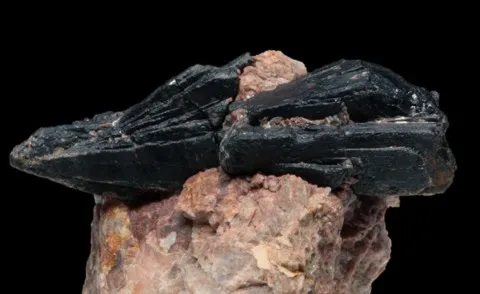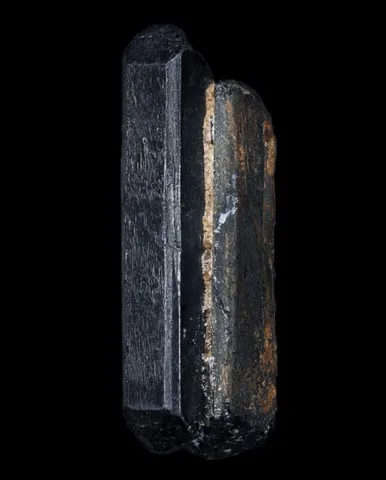SAMARSKITE
Class : Oxides and hydroxides
Subclass : Oxides
Crystal system : Monoclinic
Chemistry : (Y,Ce,Fe,U)(Bb,Ta)O4
Rarity : Uncommon
Samarskite is one of these complex oxides of niobium and tantalum in which the replacements between elements are multiple. Its general formula is quite close to that of the pyrochlore and betafite group, the dominant elements being, in addition to tantalum and niobium, iron, yttrium and uranium. Uranium contents can exceed 20% and the mineral is almost always metamict. Samarskite is a mineral of potassic granitic pegmatites where it is associated with columbite, zircon, albite, topaz, uraninite, etc... It was named in honor of Colonel Vasilii Yerafovich von Samarski-Bykhovets, Chief of the Russian Mining Engineers Corps. Smarskite occurs in elongated prismatic crystals of orthorhombic appearance; sometimes in oriented intergrowths with columbite, or flattened lamellar individuals. They are rarely clear and most often coarse ; the largest reach 12 cm. The color of the fresh mineral is velvety black to dark chocolate brown, but it is often surrounded by a yellowish brown metamictization envelope. It is exceptionally a thorium ore.
Main photo : Samarskite from Pit No. 50, Ilmen, Russia © Christof Schäfer
Samarskite in the World

Twinning
No known twinning for this mineral species.
Fakes and treatments
No fakes listed for this mineral species.
Hardness : 5 to 6
Density : 5 to 5.69
Fracture : Conchoidal to sub-conchoidal
Streak : Reddish brown to black
TP : Translucent to opaque
RI : 2.1 to 2.2
Birefringence : 0
Optical character : None
Pleochroism : None
Fluorescence : None
Solubility : Hydrochloric acid, nitric acid
Magnetism : ParamagneticRadioactivity : Medium

